The History of a Mouthful of Bread, Jean Macé [best autobiographies to read TXT] 📗
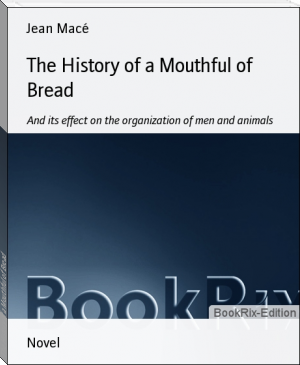
- Author: Jean Macé
Book online «The History of a Mouthful of Bread, Jean Macé [best autobiographies to read TXT] 📗». Author Jean Macé
Our food, or " aliments " as the general collection of different sorts of food is called, are divided into two very distinct sets: some, which are destined to be burnt, and which are called
aliments of combustion ; others, which are destined to nourish the body, and which are called aliments of nutrition . I have to tell you now about these last, and you will find their history by no means uninteresting.
Learned men having detected, beyond the possibility of a doubt, the existence of these two sorts of aliments, one is tempted to think they ought to have made it known to the cooks, and that ever since so important a discovery, the dishes on all well-regulated tables should have been arranged accordingly; aliments of combustion on one side, aliments of nutrition on the other. It cannot be enough merely to give your guests a treat; you ought to provide them with everything necessary for the proper fulfilment of the claims within; and if you give some nothing but combustibles, leaving the others no share of fuel, how will they be able to manage? Nobody thinks about this, however; not even cooks, to begin with, who, as far as fire is concerned, find they have had quite enough to do with it in their cooking; and as for the guests, when they have had their dinner they go away satisfied, as a matter of course, quite as well provided for as if the mistress of the house had made her calculations, pen in hand, while writing out the bill of fare, with a view to combustion and nutrition. Now, how is that?
It is because the two sorts of aliments are, for the most part, met with together in everything we eat, so that we swallow them at once in one mouthful; and have therefore no need to trouble ourselves further on the subject. There is our bit of bread, for instance. What is bread made of? Of flour. Bread, then, must contain all that was previously in the flour. Very good. Now I will teach you how to discover in flour the aliment of combustion on the one hand, and the aliment of nutrition on the other.
Take a handful of flour, and hold it under a small stream of water; knead it lightly between your fingers. The water will be quite white as it leaves it, carrying away with it a fine powder, which you could easily collect if you were to let the water run into a vase, where the powder would soon settle to the bottom. That powder is starch-the same starch as washerwomen use for starching linen, and which our grandfathers employed in powdering their wigs. You had some put on your own hair one day when you were dressed up as a court-lady of olden time. Now, starch is an excellent combustible. People have succeeded, by means which I will not offer to detail here, in ascertaining almost exactly what it is made of, and they have found in it three of our old acquaintances, oxygen, hydrogen, and carbon, combined together in such proportions that 100 ounces of starch contain as follows:
Ounces.
Carbon 45
Hydrogen 6
Oxygen 49
--
100 I give you the calculation in round numbers, so as not to burden your memory with fractions; and I will do the same with the other sums I shall have to go through to-day, this being, let me tell you, an arithmetical day. Besides, I could scarcely take upon myself to warrant the absolute correctness of those very precise fractions people sometimes go into. Even our learned friends squabble now and then as to which is right or wrong over the 100th part of a grain, more or less, in making out their balance, and you and I will not offer to decide between them. I always think we have accomplished wonders in getting even near the mark, and with their permission we will stop there.
Starch, then, of whose weight carbon constitutes nearly one-half, is of course a first-rate combustible. Indeed, one may almost consider it the parent, as it were, of at least half our aliments of combustion, for if (in consequence of a certain operation, which nature has the power of performing for herself, in certain circumstances) it loses a portion of its carbon, so that there remain but 36 ounces of it in the 100 of starch, our starch is turned into something else; now can you guess what that something is? Neither more nor less than sugar ! Witness the grand manufactories at Colmar, in France, where bags of starch are converted into casks of syrup by a process of nature alone; so that the inhabitants of the neighborhood sweeten their coffee at breakfast with what might have been made into rolls, had it been left alone. And this is not all. Give back this starch-sugar into the hands of Nature once more by putting it into certain other conditions, and a new process begins in it. About a third of its carbon will unite itself, of its own accord, with the two-thirds of its oxygen, so as to make carbonic acid, (you are acquainted with that gentleman now) which shall fly off and away, and there will remain-what do you think?- Alcohol , that other combustible we talked about, and which burns even better than sugar and starch, since in a hundred ounces it contains as follows:-
Ounces.
Carbon 53
Hydrogen 13
Oxygen 34
--
100
All this astonishes you. What would you say then if I were to tell you that your pocket-handkerchief is composed of entirely the same materials as starch, and in the same proportions too, and that if a chemist were to take a fancy, by way of a joke, to make you a tumbler of sugar and water, or a small glass of brandy out of it, he could do so if he chose. Wonders are found, you see, in other places besides fairy tales; and since I have begun this subject I will go on to the end. Know then that from the log on the fire, to the back of your chair, everything made of wood, is in pretty nearly the same predicament as your pocket-handkerchief; and if people are not in the habit of making casks of syrup and kegs of brandy out of the trees they cut down in the woods, it is only, I assure you, because such sugar and brandy would cost more to make than other sorts, and would not be so good in the end. Should some one ever invent and bring to perfection an economical process for doing it thoroughly well, sugar-makers and spirit-distillers will have to be on their guard!
But we are wandering from our subject. If I have allowed myself to make this digression, however, it is because I am not sorry to accustom your mind early to the idea of those wonderful transformations which nature accomplishes, and of which I could give you many other instances.
To return to our flour. As soon as all the starch is gone out of it, there remains in your hand a whitish, elastic substance, which is also sticky or glutinous , so that it makes a very good glue if you choose; and hence its name of gluten , which is the Latin word for glue.
When dried, this gluten becomes brittle and semi-transparent. It keeps for an unlimited time in alcohol , putrefies very soon in water exposed to the air, and is easily dissolved in a wash of soda or potash. Finally 100 ounces of it contain as follows:-
Ounces.
Carbon 63
Hydrogen 7
Oxygen 13
Nitrogen 17
--
100
Observe the last material named. It is a new arrival, of which I shall soon have something to say.
But where am I leading you? you will ask, with all these uninteresting details about glue.
Wait a little and you shall hear.
You have probably never seen any one bled, which is a pity, as it happens; for if you had, you might have noticed (provided you had had the courage to look into the basin), that after a few seconds, the blood which had been taken away separated itself of its own accord into two portions; the one a yellowish transparent liquid, the other an opaque red mass floating on the top, and which is called the
coagulum of the blood or clot . This coagulum owes its color to an infinity of minute red bodies of which we will speak more fully by and by, and which are retained as if in a net, in the meshes of a peculiar substance to which I am now going to call your attention.
That substance is whitish, elastic and sticky; and when dried becomes brittle and semi-transparent. It keeps for an unlimited time in alcohol, putrefies very soon in water exposed to the air, and is easily dissolved in a wash of soda or potash. Finally 100 ounces of it contain as follows:-
Ounces.
Carbon 63
Hydrogen 7
Oxygen 13
Nitrogen 17
--
100
This substance is called fibrine . It goes to form the fibres of those muscles which are contained in a half formed state in the blood.
You are laughing by this time I know,
aliments of combustion ; others, which are destined to nourish the body, and which are called aliments of nutrition . I have to tell you now about these last, and you will find their history by no means uninteresting.
Learned men having detected, beyond the possibility of a doubt, the existence of these two sorts of aliments, one is tempted to think they ought to have made it known to the cooks, and that ever since so important a discovery, the dishes on all well-regulated tables should have been arranged accordingly; aliments of combustion on one side, aliments of nutrition on the other. It cannot be enough merely to give your guests a treat; you ought to provide them with everything necessary for the proper fulfilment of the claims within; and if you give some nothing but combustibles, leaving the others no share of fuel, how will they be able to manage? Nobody thinks about this, however; not even cooks, to begin with, who, as far as fire is concerned, find they have had quite enough to do with it in their cooking; and as for the guests, when they have had their dinner they go away satisfied, as a matter of course, quite as well provided for as if the mistress of the house had made her calculations, pen in hand, while writing out the bill of fare, with a view to combustion and nutrition. Now, how is that?
It is because the two sorts of aliments are, for the most part, met with together in everything we eat, so that we swallow them at once in one mouthful; and have therefore no need to trouble ourselves further on the subject. There is our bit of bread, for instance. What is bread made of? Of flour. Bread, then, must contain all that was previously in the flour. Very good. Now I will teach you how to discover in flour the aliment of combustion on the one hand, and the aliment of nutrition on the other.
Take a handful of flour, and hold it under a small stream of water; knead it lightly between your fingers. The water will be quite white as it leaves it, carrying away with it a fine powder, which you could easily collect if you were to let the water run into a vase, where the powder would soon settle to the bottom. That powder is starch-the same starch as washerwomen use for starching linen, and which our grandfathers employed in powdering their wigs. You had some put on your own hair one day when you were dressed up as a court-lady of olden time. Now, starch is an excellent combustible. People have succeeded, by means which I will not offer to detail here, in ascertaining almost exactly what it is made of, and they have found in it three of our old acquaintances, oxygen, hydrogen, and carbon, combined together in such proportions that 100 ounces of starch contain as follows:
Ounces.
Carbon 45
Hydrogen 6
Oxygen 49
--
100 I give you the calculation in round numbers, so as not to burden your memory with fractions; and I will do the same with the other sums I shall have to go through to-day, this being, let me tell you, an arithmetical day. Besides, I could scarcely take upon myself to warrant the absolute correctness of those very precise fractions people sometimes go into. Even our learned friends squabble now and then as to which is right or wrong over the 100th part of a grain, more or less, in making out their balance, and you and I will not offer to decide between them. I always think we have accomplished wonders in getting even near the mark, and with their permission we will stop there.
Starch, then, of whose weight carbon constitutes nearly one-half, is of course a first-rate combustible. Indeed, one may almost consider it the parent, as it were, of at least half our aliments of combustion, for if (in consequence of a certain operation, which nature has the power of performing for herself, in certain circumstances) it loses a portion of its carbon, so that there remain but 36 ounces of it in the 100 of starch, our starch is turned into something else; now can you guess what that something is? Neither more nor less than sugar ! Witness the grand manufactories at Colmar, in France, where bags of starch are converted into casks of syrup by a process of nature alone; so that the inhabitants of the neighborhood sweeten their coffee at breakfast with what might have been made into rolls, had it been left alone. And this is not all. Give back this starch-sugar into the hands of Nature once more by putting it into certain other conditions, and a new process begins in it. About a third of its carbon will unite itself, of its own accord, with the two-thirds of its oxygen, so as to make carbonic acid, (you are acquainted with that gentleman now) which shall fly off and away, and there will remain-what do you think?- Alcohol , that other combustible we talked about, and which burns even better than sugar and starch, since in a hundred ounces it contains as follows:-
Ounces.
Carbon 53
Hydrogen 13
Oxygen 34
--
100
All this astonishes you. What would you say then if I were to tell you that your pocket-handkerchief is composed of entirely the same materials as starch, and in the same proportions too, and that if a chemist were to take a fancy, by way of a joke, to make you a tumbler of sugar and water, or a small glass of brandy out of it, he could do so if he chose. Wonders are found, you see, in other places besides fairy tales; and since I have begun this subject I will go on to the end. Know then that from the log on the fire, to the back of your chair, everything made of wood, is in pretty nearly the same predicament as your pocket-handkerchief; and if people are not in the habit of making casks of syrup and kegs of brandy out of the trees they cut down in the woods, it is only, I assure you, because such sugar and brandy would cost more to make than other sorts, and would not be so good in the end. Should some one ever invent and bring to perfection an economical process for doing it thoroughly well, sugar-makers and spirit-distillers will have to be on their guard!
But we are wandering from our subject. If I have allowed myself to make this digression, however, it is because I am not sorry to accustom your mind early to the idea of those wonderful transformations which nature accomplishes, and of which I could give you many other instances.
To return to our flour. As soon as all the starch is gone out of it, there remains in your hand a whitish, elastic substance, which is also sticky or glutinous , so that it makes a very good glue if you choose; and hence its name of gluten , which is the Latin word for glue.
When dried, this gluten becomes brittle and semi-transparent. It keeps for an unlimited time in alcohol , putrefies very soon in water exposed to the air, and is easily dissolved in a wash of soda or potash. Finally 100 ounces of it contain as follows:-
Ounces.
Carbon 63
Hydrogen 7
Oxygen 13
Nitrogen 17
--
100
Observe the last material named. It is a new arrival, of which I shall soon have something to say.
But where am I leading you? you will ask, with all these uninteresting details about glue.
Wait a little and you shall hear.
You have probably never seen any one bled, which is a pity, as it happens; for if you had, you might have noticed (provided you had had the courage to look into the basin), that after a few seconds, the blood which had been taken away separated itself of its own accord into two portions; the one a yellowish transparent liquid, the other an opaque red mass floating on the top, and which is called the
coagulum of the blood or clot . This coagulum owes its color to an infinity of minute red bodies of which we will speak more fully by and by, and which are retained as if in a net, in the meshes of a peculiar substance to which I am now going to call your attention.
That substance is whitish, elastic and sticky; and when dried becomes brittle and semi-transparent. It keeps for an unlimited time in alcohol, putrefies very soon in water exposed to the air, and is easily dissolved in a wash of soda or potash. Finally 100 ounces of it contain as follows:-
Ounces.
Carbon 63
Hydrogen 7
Oxygen 13
Nitrogen 17
--
100
This substance is called fibrine . It goes to form the fibres of those muscles which are contained in a half formed state in the blood.
You are laughing by this time I know,
Free e-book «The History of a Mouthful of Bread, Jean Macé [best autobiographies to read TXT] 📗» - read online now
Similar e-books:
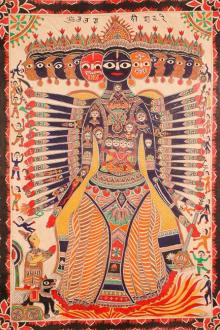
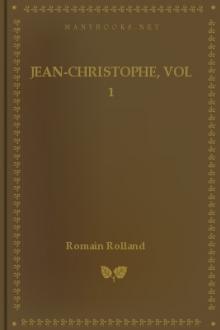
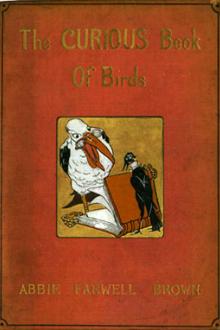

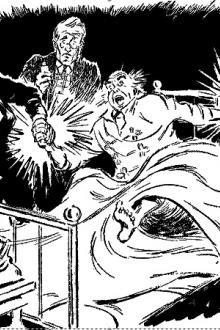
Comments (0)